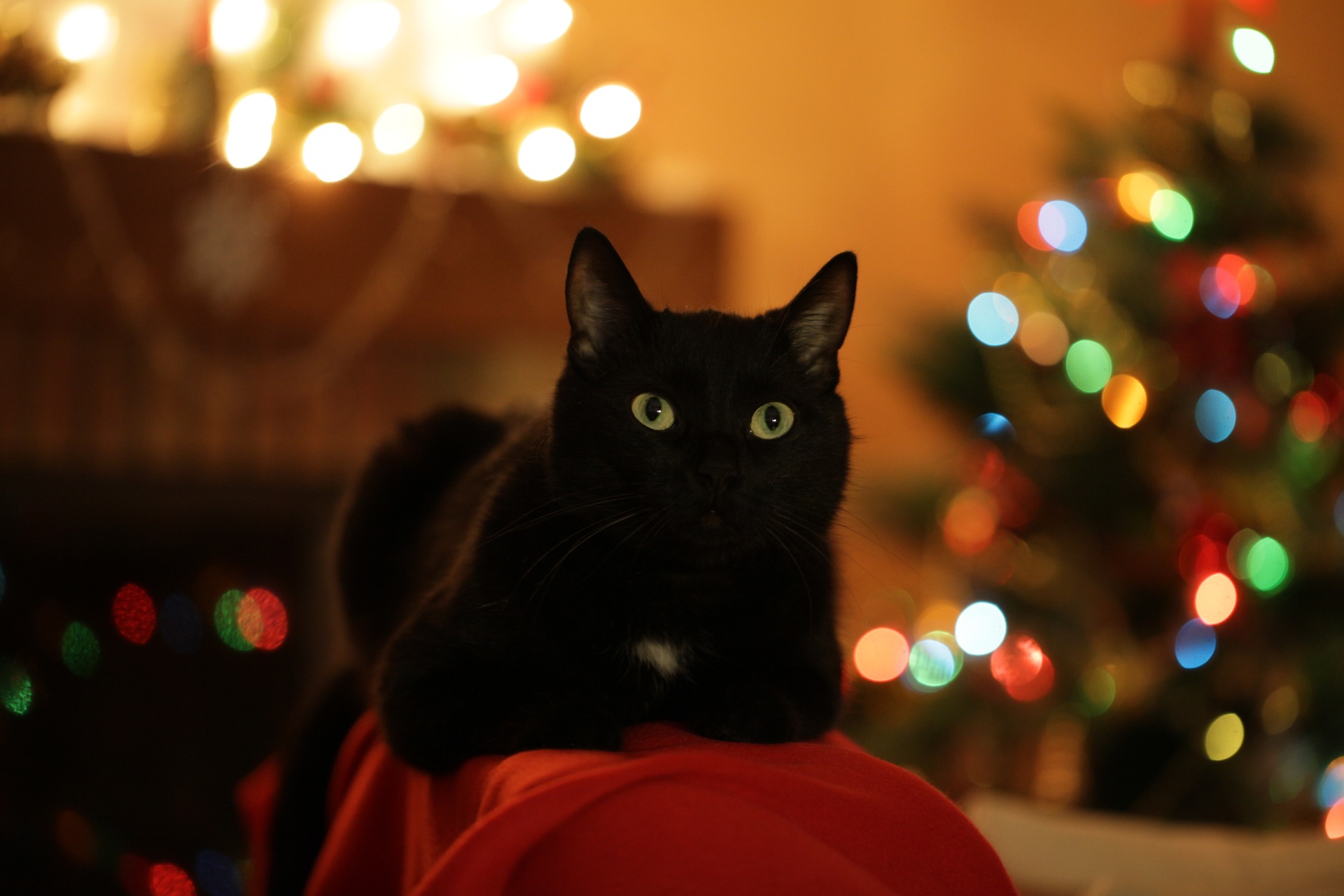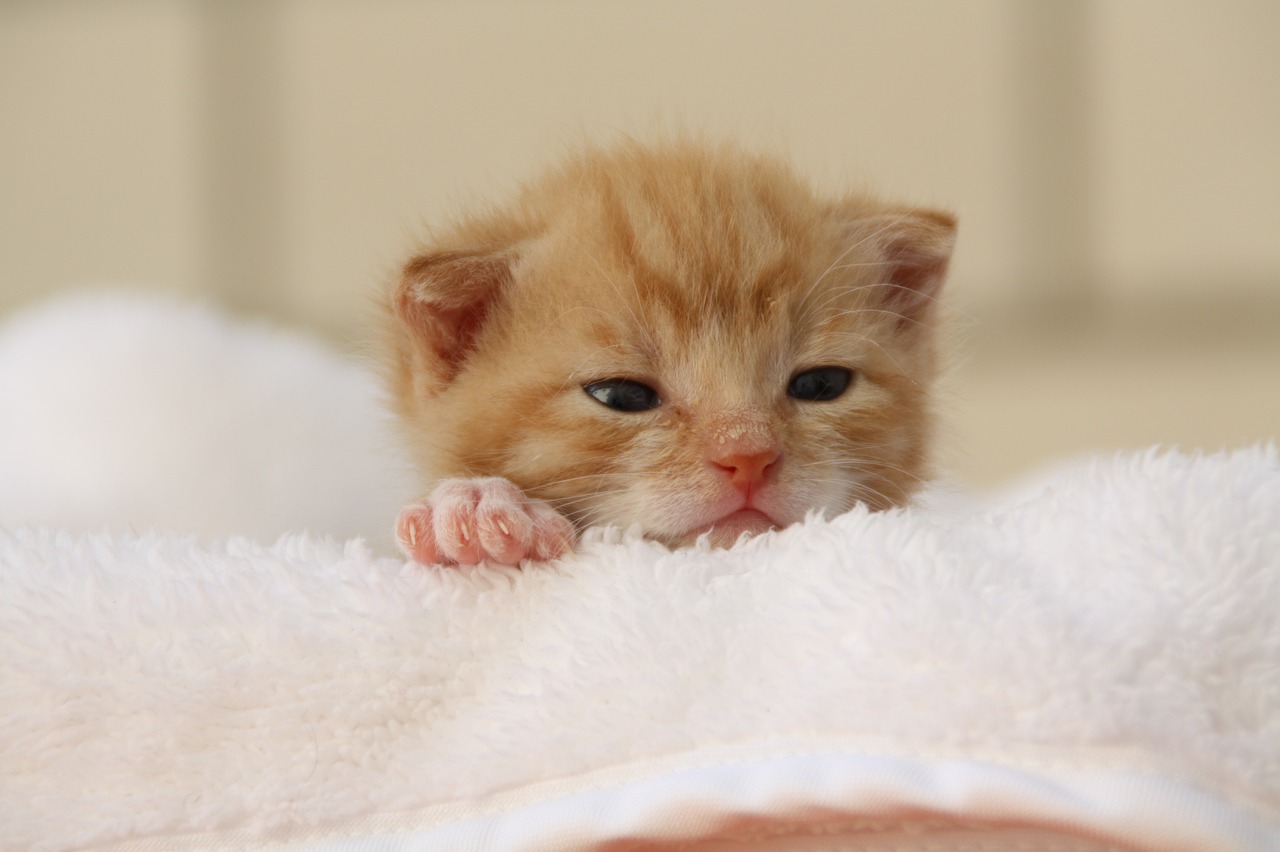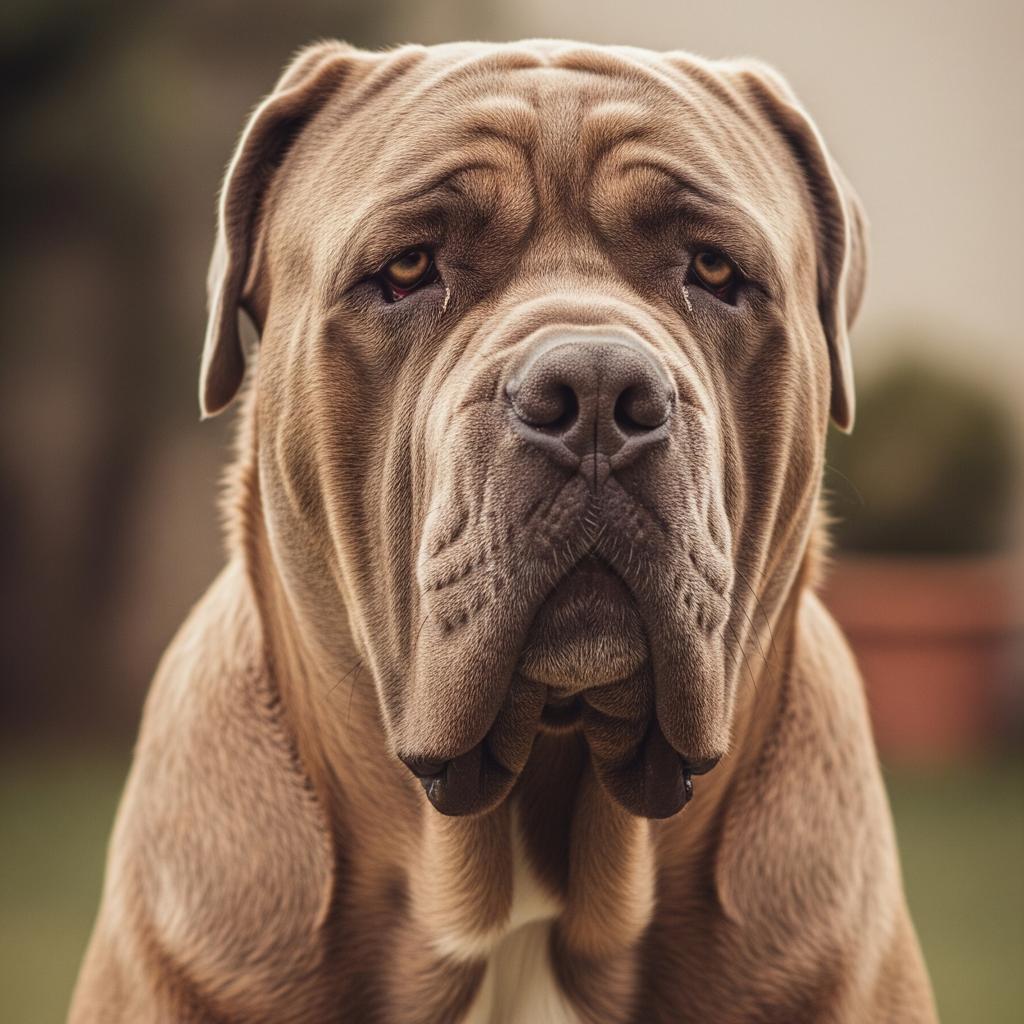
Neapolitan Mastiff: Calm and Loyal Watchdog
The Neapolitan Mastiff breed has ancient origins. It is even mentioned in the 9th century BC because a bas-relief preserved in the British Museum in London depicts a dog similar in appearance to the Neapolitan Mastiff. However, it was Alexander the Great who crossed Macedonian war dogs with short-haired Indian dogs, creating a new breed: the Molosser, from which all Molosser breeds originated and which were then spread by the Romans throughout Europe.
Over the centuries, it proved to be an excellent sheepdog in southern Italy, where it is still widespread today as a guard dog. Italian brigands were often seen with a Neapolitan Mastiff at their side and never went without their dog in riots. Its massive build and immense strength were used to instil fear throughout the south. Around the 20th century, however, the breed disappeared almost entirely, so much so that it was feared to be extinct. It was rediscovered after the Second World War in the countryside around Naples and Avellino, hence the current name Mastino Napoletano.
The father of the breed is considered to be the Swiss writer Piero Scanziani, who fought long and hard for its official recognition, which came in 1949.
An interesting fact is that this dog enchanted many viewers playing the role of the faithful companion of the half-giant Hagrid in the Harry Potter saga.
Character of the Neapolitan Mastiff breed
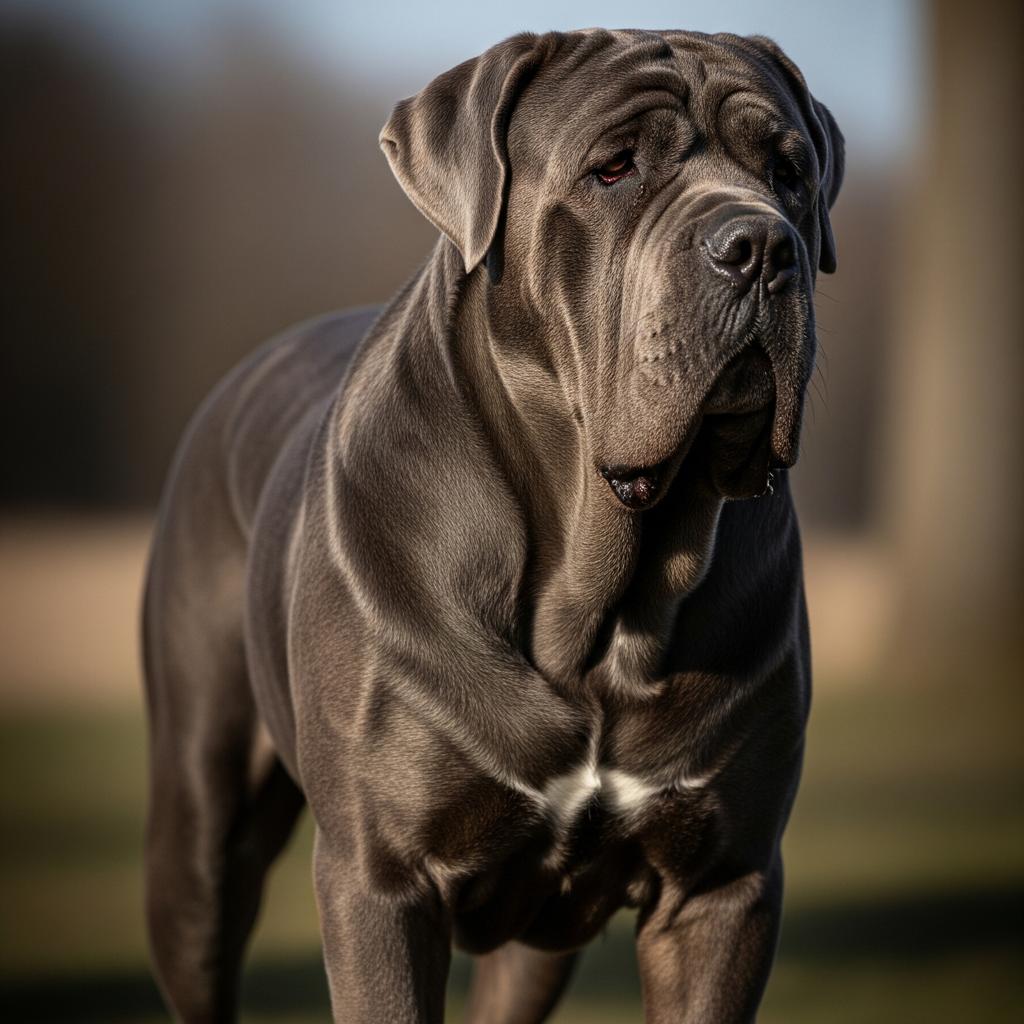
They are excellent guard dogs, but they are not aggressive and only intervene when they perceive real danger. They always seem to have a tired look, but they are actually always alert and attentive.
Careful consideration is therefore recommended if you decide to adopt a Neapolitan Mastiff; they are very territorial and protective dogs and, being courageous and independent, they act swiftly when their territory or loved ones are threatened.
It is not an apartment dog, but neither is it an animal that should be confined to the garden with the sole task of guarding; it suffers greatly from excessive isolation. The ideal home for it is a country house with a large garden where it can spend several hours outdoors, but where it is also kept indoors, especially at night.
Appearance of the Neapolitan Mastiff breed
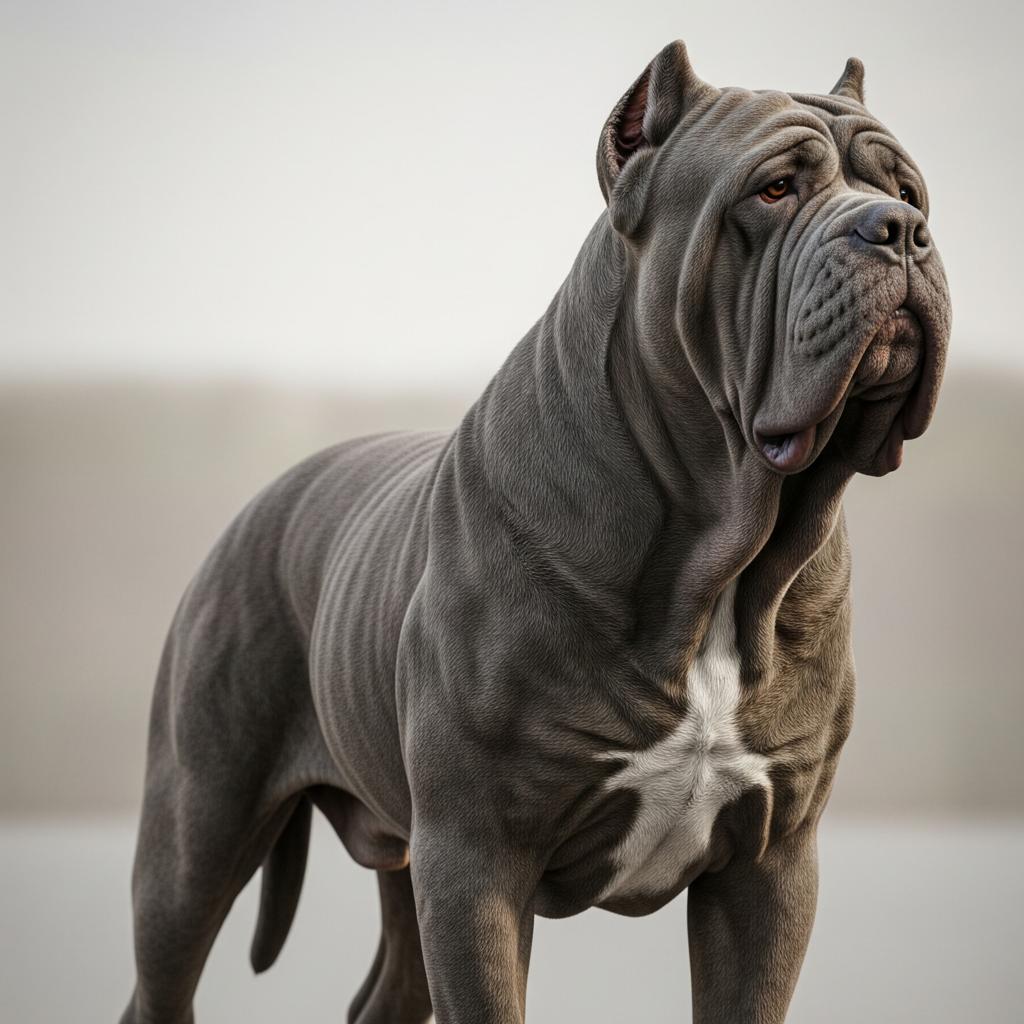
Its build is sturdy and heavy, with powerful legs and straight, strong bones in proportion to the dog's size. The tail is thick at the root and sturdy, tapering towards the tip. It has thick skin, abundant all over the body, forming numerous wrinkles and folds, especially on the muzzle and neck.
The head is massive, the muzzle is short, with the characteristic flattened shape of brachycephalic dogs, with abundant and very long lips, which cause it to drool a lot. The nose is very large and the nostrils are large and well open, black in dark-coated subjects, while lighter in brown or mahogany-coated subjects. The eyes are round and well spaced, the ears are medium-sized and triangular in shape.
The Neapolitan Mastiff's gait is slow, similar to that of a bear, and it normally trots; it rarely gallops, but has remarkable reflexes and, when necessary, a considerable burst of speed.
The coat is short and very thick, dense, without undercoat and of equal length all over the body. It can be brindled or solid in colour, usually grey, lead, black, mahogany, fawn and deer fawn.
Care and health of the Neapolitan Mastiff breed
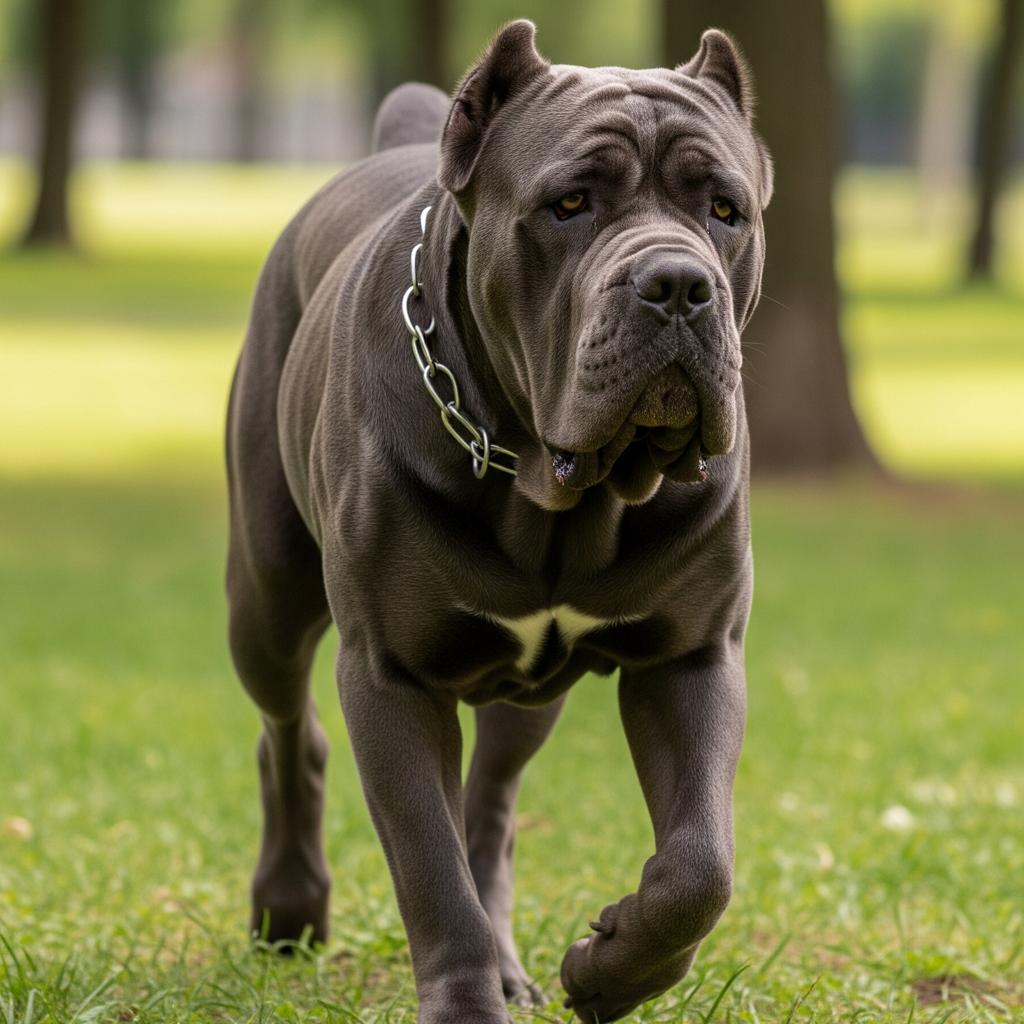
It is not an apartment dog; it needs to move, run and play outside, so during the hot hours of the day it needs walks and a garden where it can spend several hours a day. However, it suffers greatly from the cold, so it is best to keep it indoors at night.
It may suffer from hip or elbow dysplasia or third eyelid syndrome (protrusion of the Harder's gland). Furthermore, being brachycephalic, it is prone to a number of health problems caused by human aesthetic selection. Also, due to the shape of its muzzle, it snores when it sleeps. Its life expectancy is around 7-10 years.
It needs a regular diet appropriate to its level of activity, but this should be divided into at least 2-3 meals a day to avoid stomach twisting. It must also be balanced and controlled, as overweight dogs are at risk of further straining their joints.

